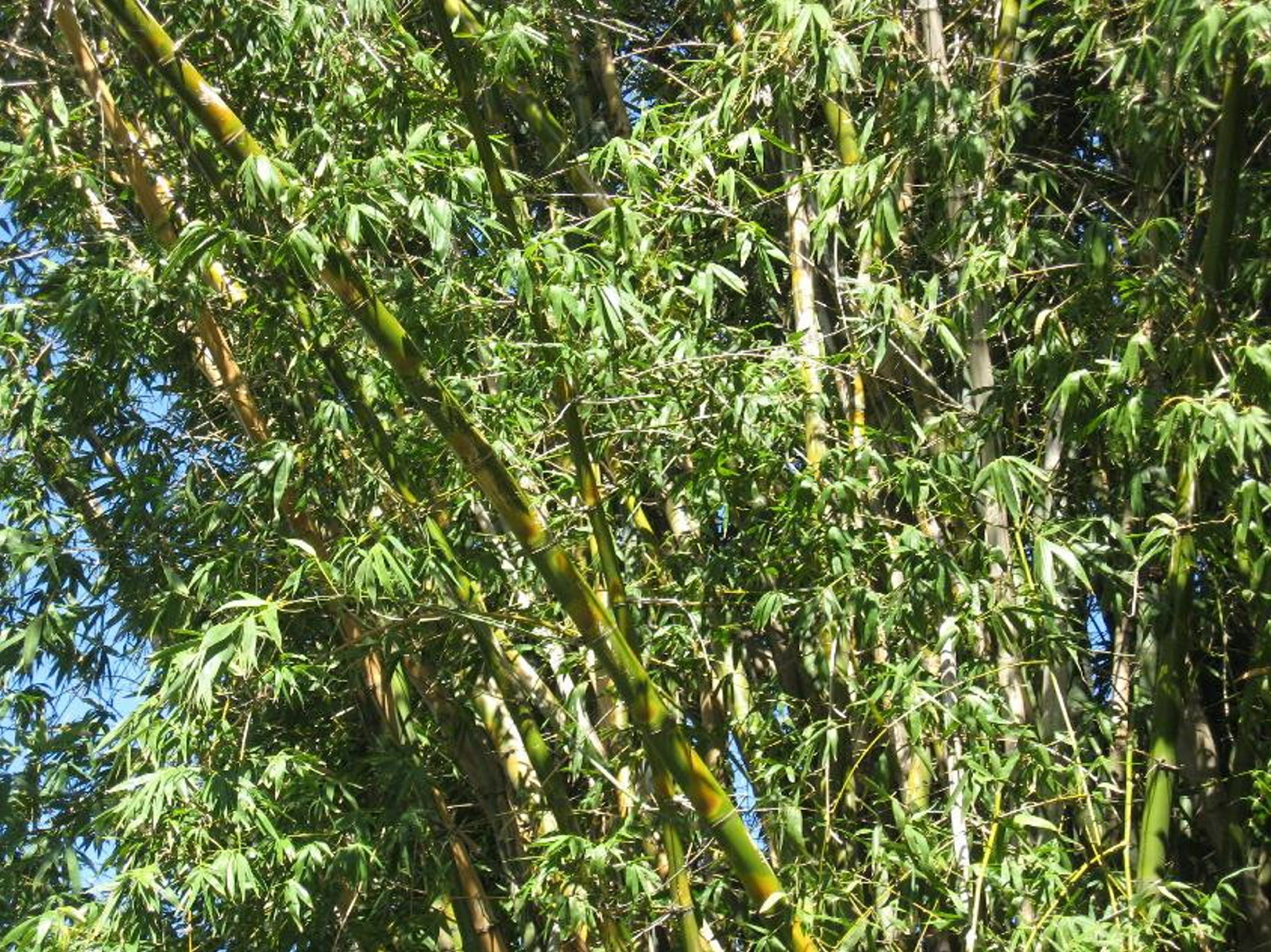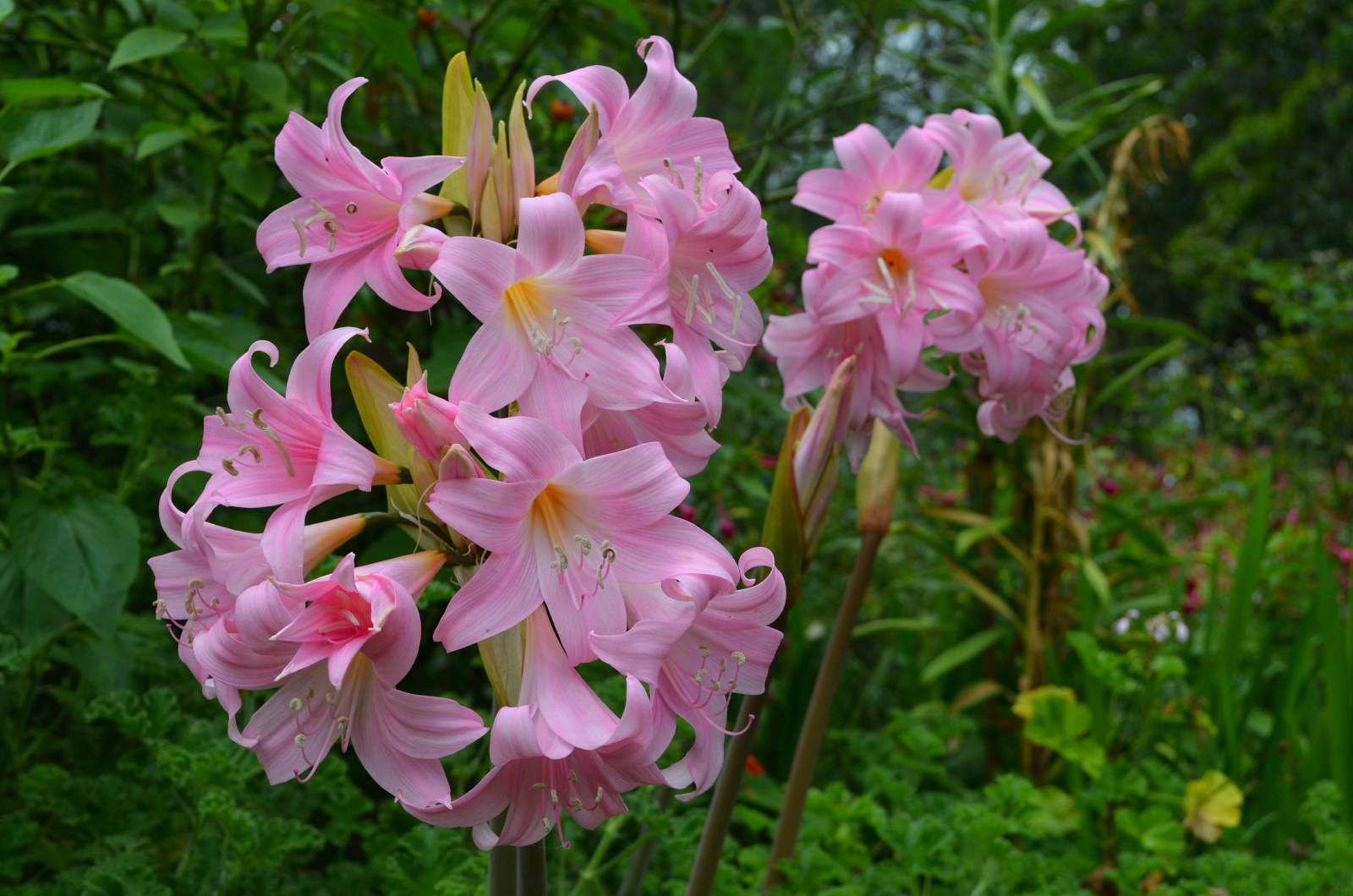The variety of bamboo at Vaucluse House
One of the most beautiful plants growing at Vaucluse House is bamboo. A variety of different types are grown here.
Bamboo was first introduced to the colony by Governor Phillip in 1788. It was both ornamental and a strong building material often used to make chairs, fans and woven mats. Bamboo fences can also be seen surrounding the gardens on the estate.
It was hoped bamboo would thrive in the Australian climate with warm weather and year-round exposure to the sun. Some original plantings still survive in our gardens
Chinese Dwarf Bamboo (Bambusa multiplex)
One of the most delicate types of bamboo is Bambusa multiplex. It originates from China and is known for its very fine foliage. The canes of Bambusa multiplex tend to arch as they grow but can easily be cut to any shape desired. It is also more tolerant of shade than most other bamboos. It is a clump-forming species, slowly increasing in diameter but remaining in the one place.
Arundinaria densifolia
A very special variety of bamboo found at Vaucluse House is Arundinaria densifolia. The genus Arundinaria is the only type of bamboo found in both the Old and New World. It is capable of growing 13m high with leaves that are both long and narrow. The canes are covered in a thin sheaf with stiff rough bristles. It was originally introduced as an ornamental plant and spreads by sending underground runners out that produce straight, upright shoots. These shoots emerge in late spring/early summer.
Giant Green Bamboo (Bambusa balcooa)
Another variety of bamboo that can be found at Vaucluse House is Bambusa balcooa. Original Wentworth plantings of this still survive in the beach paddock. It is a large-growing species of clumping bamboo brought from India. It is a particularly strong building material often used to make chairs, fans and woven mats.
One of the most striking features of Bambusa balcooa is its height. The canes can grow up to 20m tall with thick and sturdy walls. The leaves are often narrow and on average 15-30cm long. A light brown sheath protects each cane and is covered in microscopic brown hairs, hiding a beautiful bright yellow and green stem underneath. It likes water and is often planted next to a creek, channel or pond. In very dry conditions it may shed all its leaves due to water-stress.
These are some of the various types of bamboo present at Vaucluse House. They were a noticeable feature of many colonial gardens in Sydney and are a great example of the connections between Sydney and Asia in this period. Thankfully, many early plantings can still be found in the gardens at Vaucluse House.
Published on
Plant your history
Browse all
Plant your history
Beautiful bountiful bamboo
One of the most recognisable plants growing at Museums of History NSW today is bamboo. This colourful plant has a long history in colonial gardens

In the pink at Elizabeth Farm
Amid the late summer bounty in the garden at Elizabeth Farm, the crepe myrtle is the undoubted star of the show

Plant your history
Sumptuous cape bulbs light up late summer gardens
Belladonna Lilies and Crinum Lilies are tough bulbs that never say die and can survive years of neglect

Plant your history
Acanthus - an apt symbol for The Mint
Look at any classical building today, anywhere in the world and chances are you will find an acanthus leaf lurking somewhere
